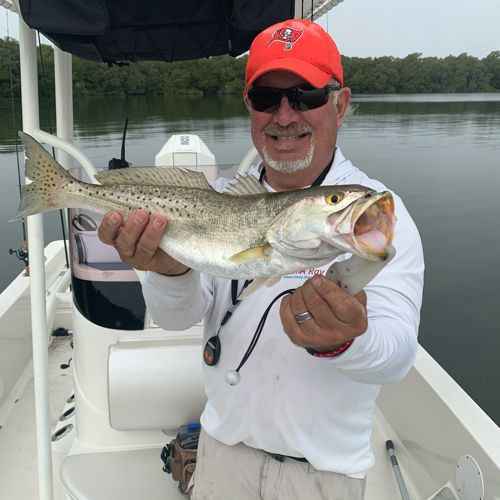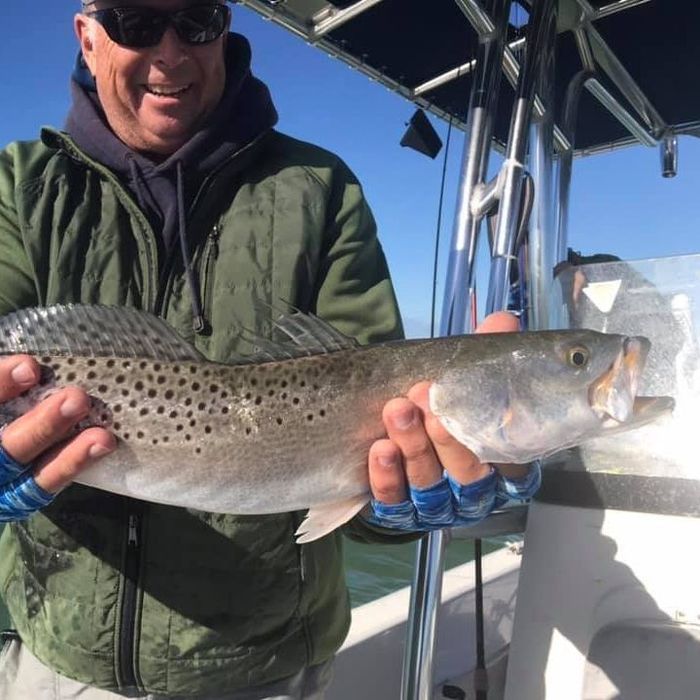Reconnecting with Nature: A Day at Sea with Captain Thom
Schedule a trip to Florida for a saltwater fishing experience you cherish forever with Captain Thom Ray.

A Little About Our Author/Captain
Like most Midwestern boys, I learned to fish from my father. I started with cane poles and a bobber fishing for bluegill in local lakes. As I got older, we fished for bass and channel catfish in larger lakes. He then took us on annual summer trips to Canada where we fished for walleye and northern pike in my early teens.
However, as an adult, I got away from fishing in exchange for golf. I played in local clubs and regional tournaments as an amateur. In 2012, I finally moved back to Indiana from California.
My return home led to my reunion with a lifelong friend with whom I fished as a boy. He invited me to fish with a guide on Kentucky Lake for a weekend, and just like that - I was “hooked” again. Within two years of that re-introduction to fishing, I purchased my first bass boat and fished in local FLW tournaments.

Home is Where the Ocean Is
I moved to Florida in 2016 and began saltwater fishing. I got my Captain’s license in late 2017 and became a saltwater inshore guide in Tarpon Springs, FL.

There's just something about being on the water that reconnects us to Mother Nature. It's calming - and in this crazy, hectic world, it is truly an escape. Learning about fish biology, their movement, and feeding trends is never-ending. Applying experience and theory and having them work on the water is exhilarating, but also sets new challenges when they don’t.
My biggest thrill now comes not from my own catches but from providing memorable experiences to kids and families. Last year, I received a review from a family that spent three days at Disney Orlando and then came over for a half-day trip on the West Coast of Florida to fish with me. According to the review written by the father, when they got home he asked the kids what their favorite part of the trip was. Their answer: “Fishing with Captain Thom. He’s better than Disney!” That’s the best review ever!
I am fortunate to work with a group in Tampa called “Angling for Relief”. They provide fishing trips to families impacted by pediatric cancer. They either have lost a young child to cancer and have surviving siblings or on a brighter note, have a young patient recovering from treatment.
My first trip with this group was in May 2018 when I took a couple and their son, a cancer warrior, out for a trip. They, unfortunately, lost their younger son in January that same year. The mother was on fire that day catching fish after fish. She was laughing and having a great time. I sent photos and quick videos to the charity founder who replied: “That’s the first time she has smiled since January! Thank You.”
It is absolutely the most gratifying feeling to be able to provide a day of fun and escape to families who have gone through experiences that we cannot even begin to imagine. I continue to work with them. For more information, check them out www.anglingforrelief.com.

Being a lifelong freshwater angler and then moving to the west coast of Central Florida, and switching to saltwater fishing has been a tremendous experience. It’s not unusual to catch 10-15 different species on any given day. But for sport fishing, hooking tarpon during the spring migration is a bucket list experience. It’s an entirely different style of fishing, where you may fish for hours without a bite and maybe get only one or two fish hooked for the day.
When you grab the line and your reel is screaming, your pulse rate jumps to 120! You learn when they are preparing to do their famous out-of-the-water jumps and also learn the technique of “bowing to the king '' on the jump. When these silver kings fly out of the water, you need to lower your rod quickly to create some slack so they won’t throw the hook.
Schedule a trip to either coast of Florida or the Florida Keys during tarpon season for a fishing experience you cherish forever.
Understanding the Famed Spotted Sea Trout (Cynoscion nebulosus)

Spotted sea trout, also referred to as speckled trout, are one of the most popular saltwater inshore/nearshore species to catch. Available from the Chesapeake Bay down the Eastern Coast, all around Florida and the Gulf of Mexico coastline to Texas, it is easy to see why it is such a popular saltwater game fish.
Understanding the behavior, habitat, and estuary of your targeted species always makes you a more productive angler. The spotted sea trout is an ambush predator instead of a roamer or hunting fish. Looking at their anatomy, you’ll notice their eyes are positioned on the top of the head to look up for their prey. They have an underslung mouth with two noticeable fangs for grabbing baitfish. Their spotted body is perfect camouflage for hiding in seagrass.
Sea trout have great spatial awareness. Because they sit still and wait to ambush their next meal, they are very aware of what is happening around them. You must approach them quietly and give them time to settle back down after entering their territory. As a sniper, they sit and wait for their prey. Look for them at the edge of a sand pothole, in areas of seagrass broken up with sand holes. They also prefer to lie in shallow water with quick access to deeper water. The optimal trout estuary is a big grass flat that has structures like oyster beds, a dock, and access to deep water. Juvenile trout will tend to school by size. If you catch one in 12-14 inches you will likely catch more.
Gator trout are larger trout usually above 20-24 inches depending upon local definition. They tend to be loners and don’t mix with the smaller trout. Being the most numerous of the apex predators on the grass flats, the Sea Trout have a low light advantage. Target them in the early morning to dawn, and late afternoon to sunset.
For these fish, I prefer a 7 to a 7.5-foot medium rod with a fast-action tip. I usually have a 2500 or 3000 size reel spooled with 10 lbs. braid and a 20 lbs. fluorocarbon leader.
A 3 to 5-inch paddle tail on a ¼ oz jig head works well in most conditions. If shallow and grassy, I’ll rig a paddle tail or artificial shrimp on a 1/8 oz owner twistlock hook for weedless presentations. For paddle tail colors, I like white/silver mimicking the live baitfish. For shrimp, pink or electric chicken colors work well. For live shrimp and bait fish presentations, I recommend a popping cork with the bait presented 18-24 inches below the cork. Pop the cork to make the shrimp active in the water. Also, the popping noise imitates shrimp noises in the water. This is a great rig for kids and beginners that will produce a lot of action. I will also use topwater plugs such as a Spook Jr in the shallow waters. Hard plugs such as Mirrodine 17MR and 27MR work extremely well, especially if soft plastic baits are getting destroyed by pinfish and pufferfish.
Spotted Sea Trout are plentiful in most grass flats and intercoastal waters. They make for great table fare, being a white, flaky filet. Be aware of your local size slots and quantities. The optimal size for the table is those in the 17 to 20-inch range. Releasing the larger gator trout back to the estuary to spawn more of these popular gamefish is strongly encouraged.


